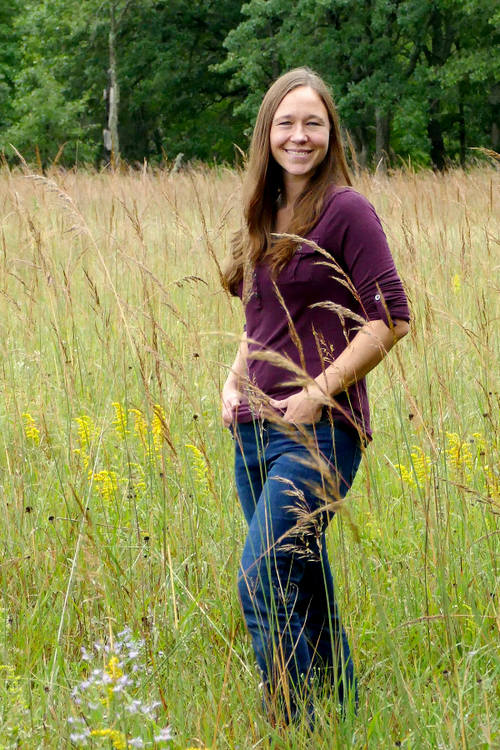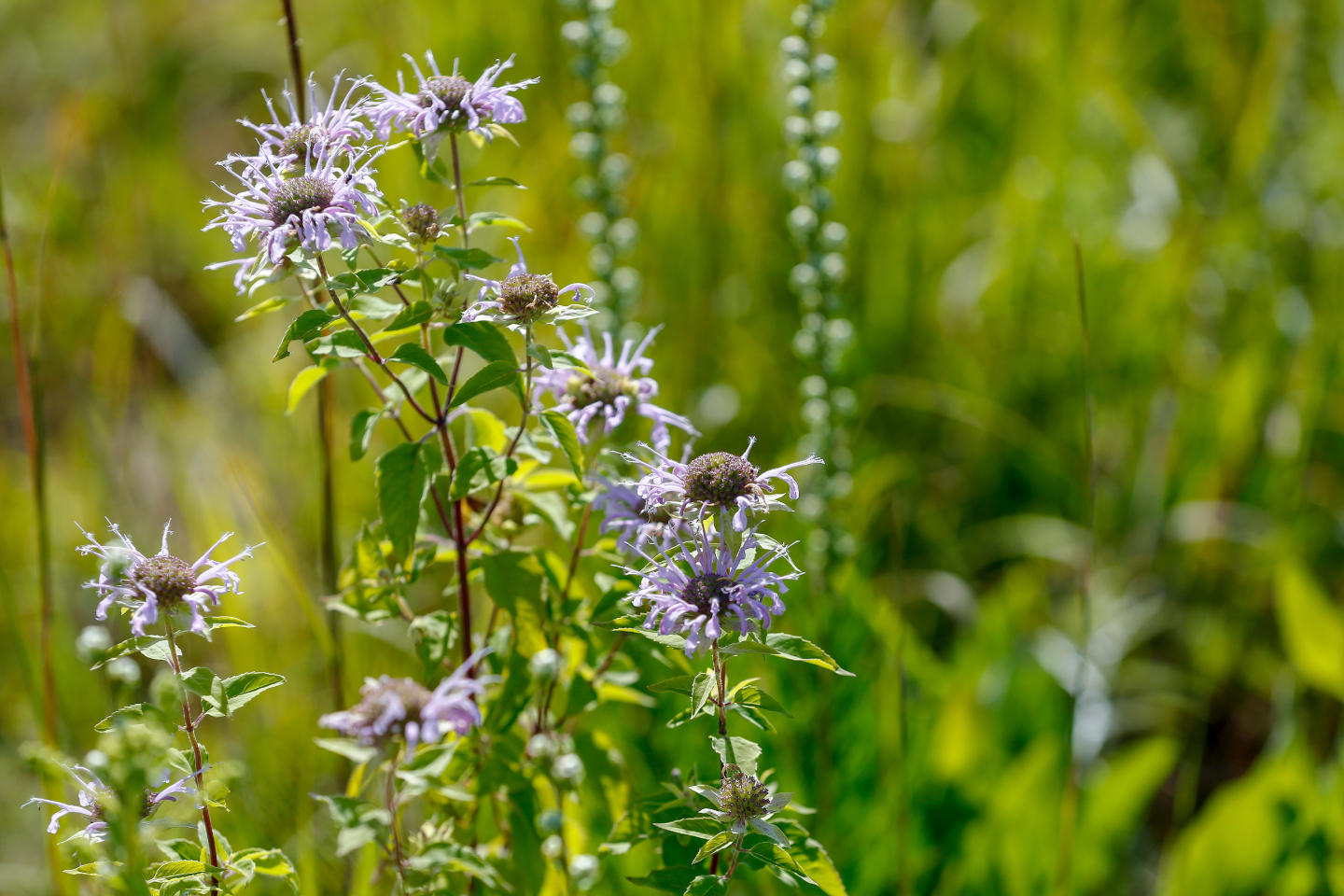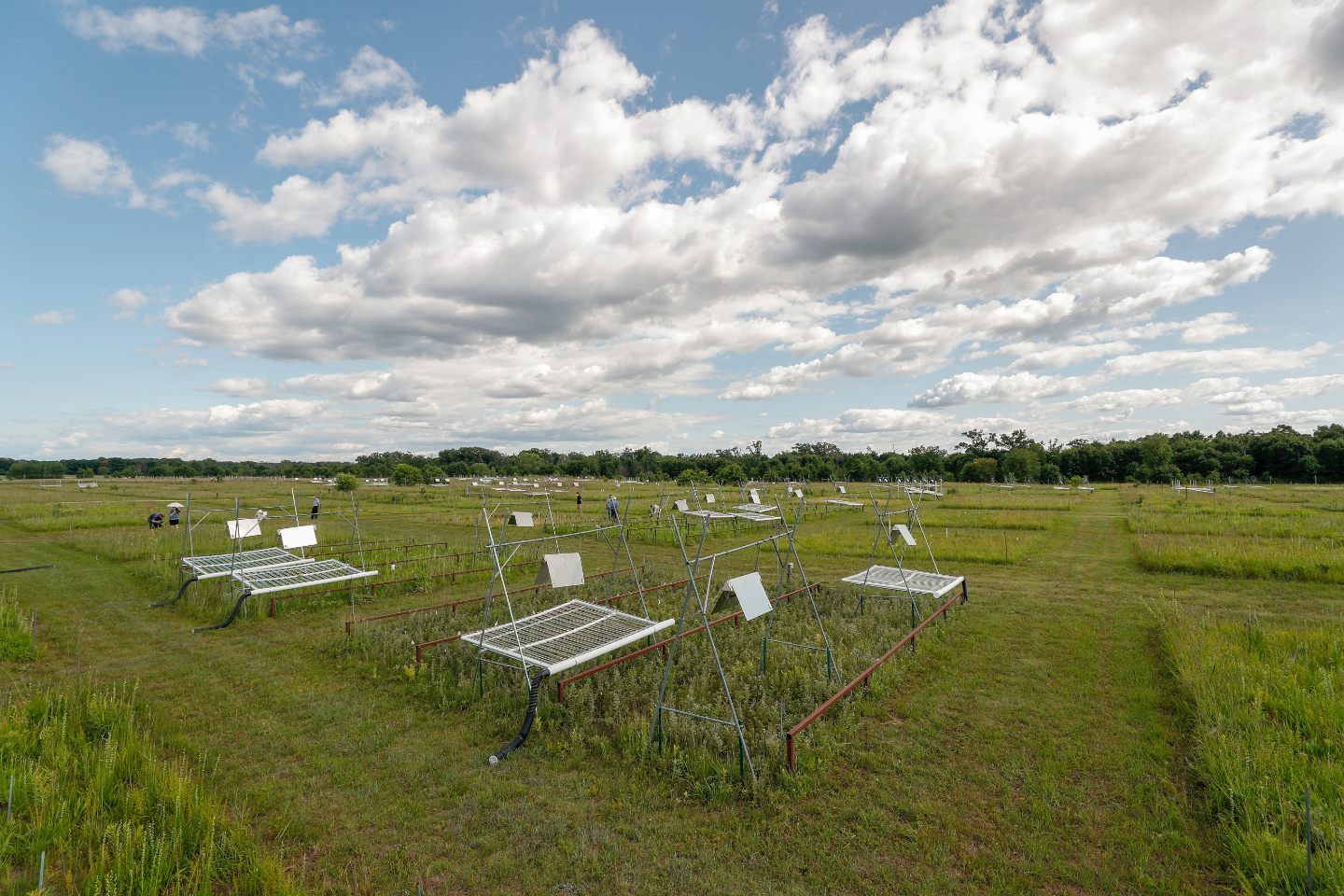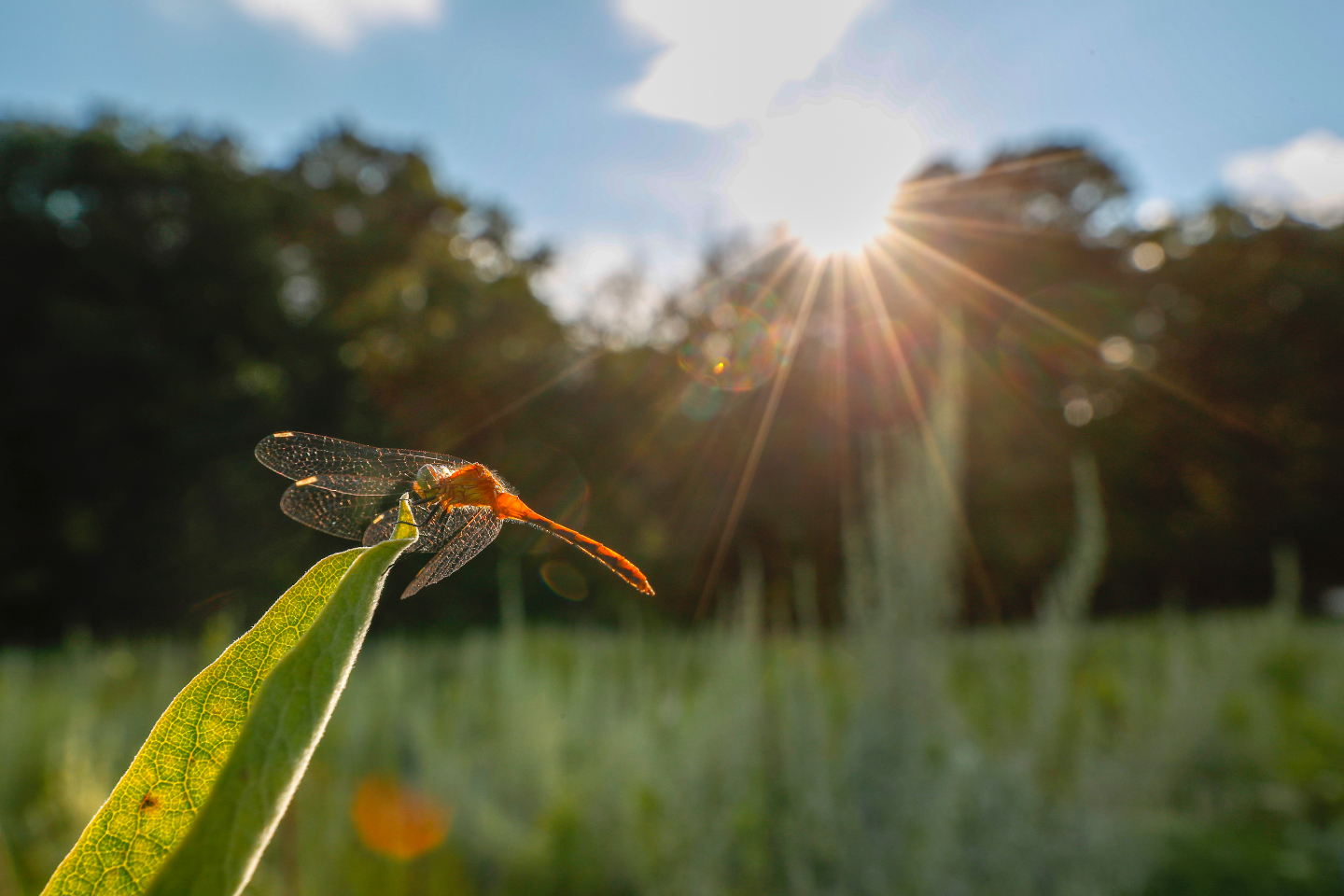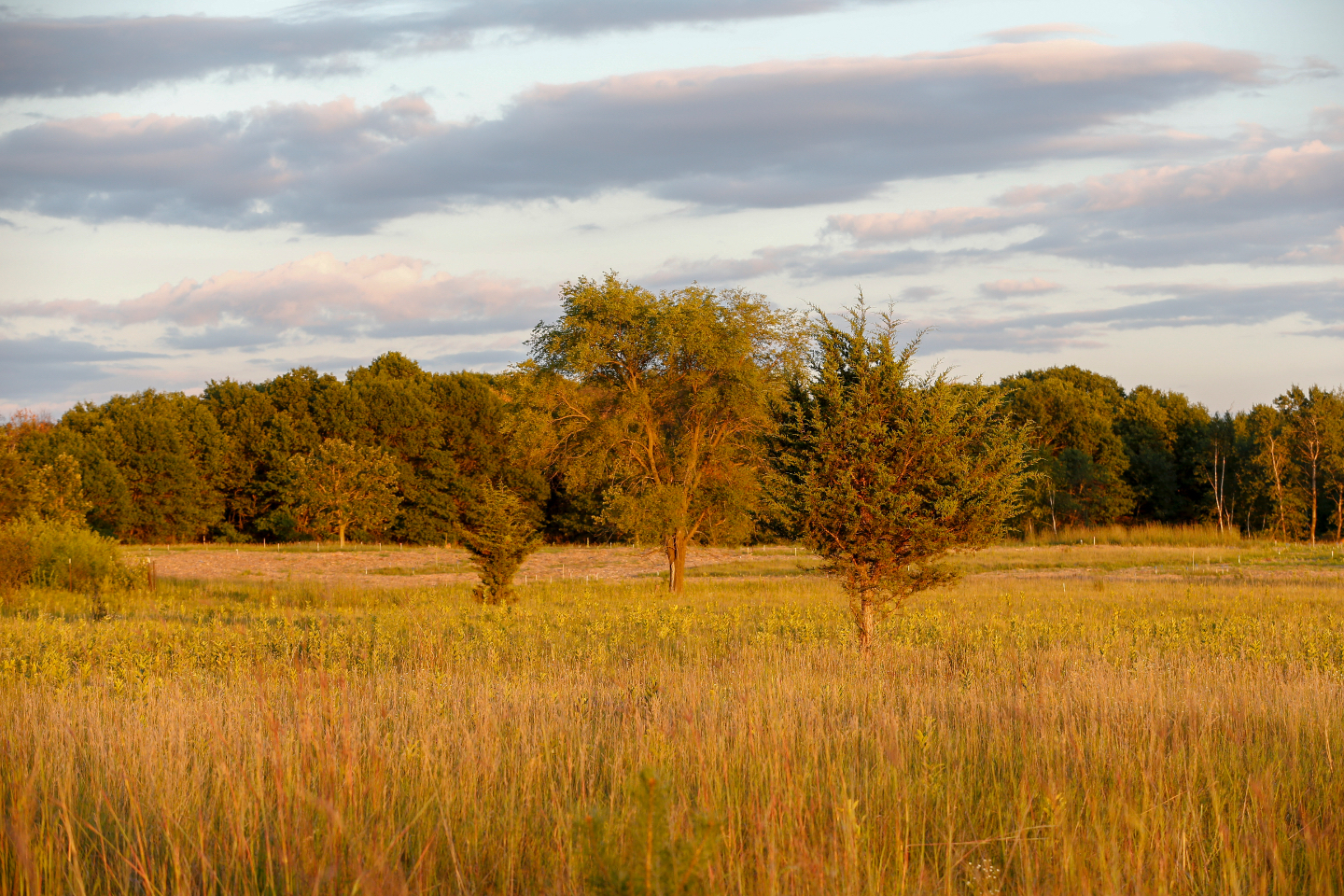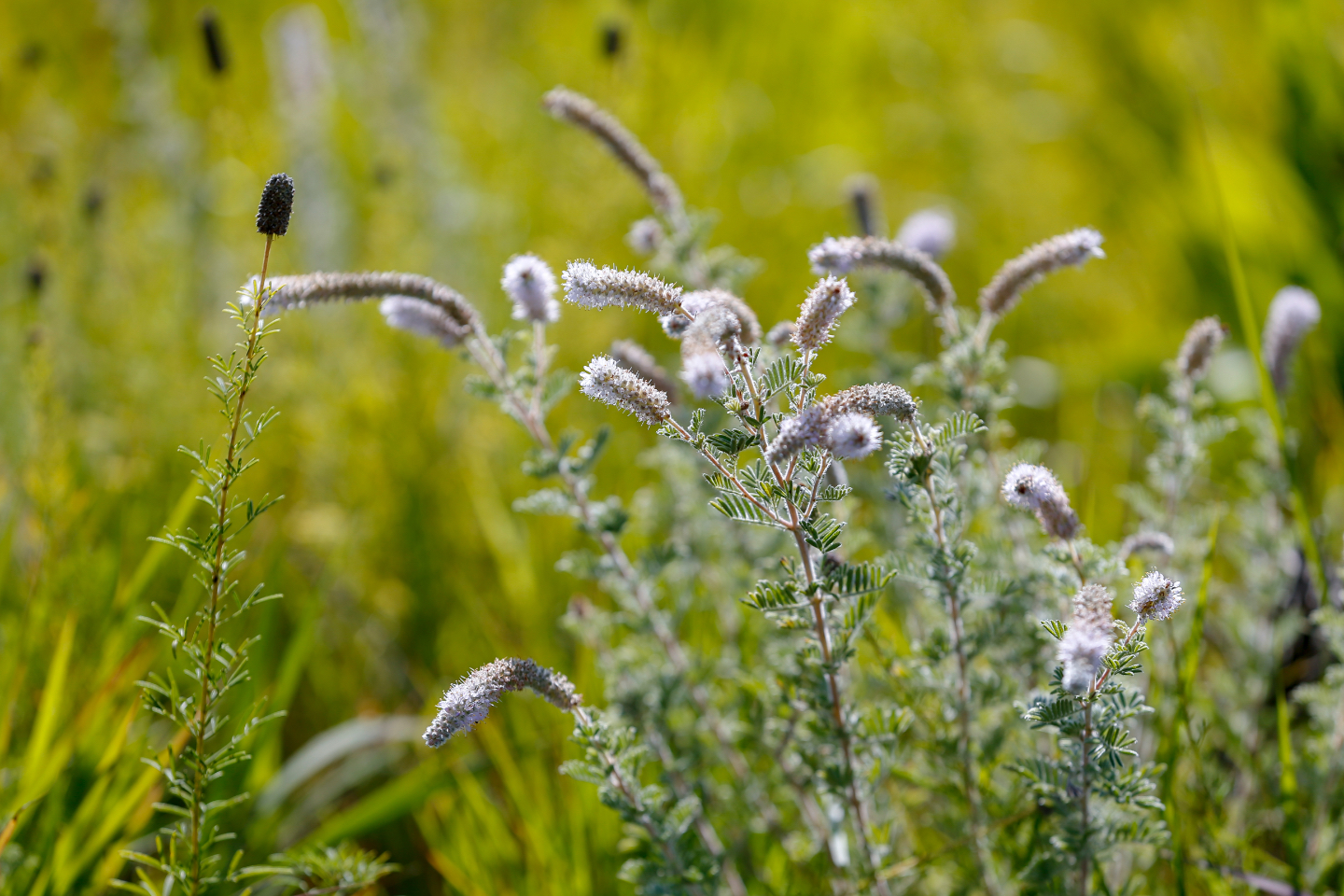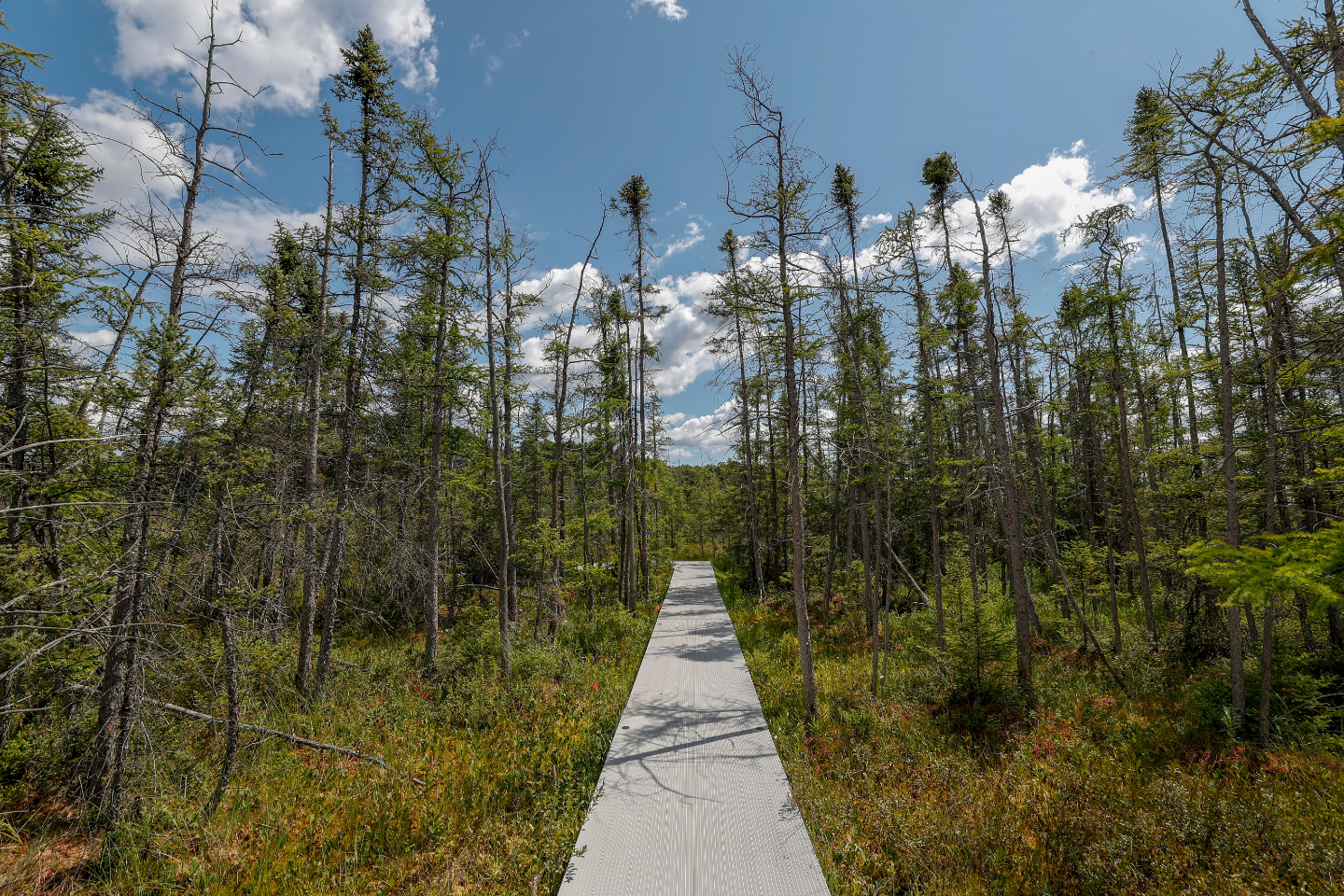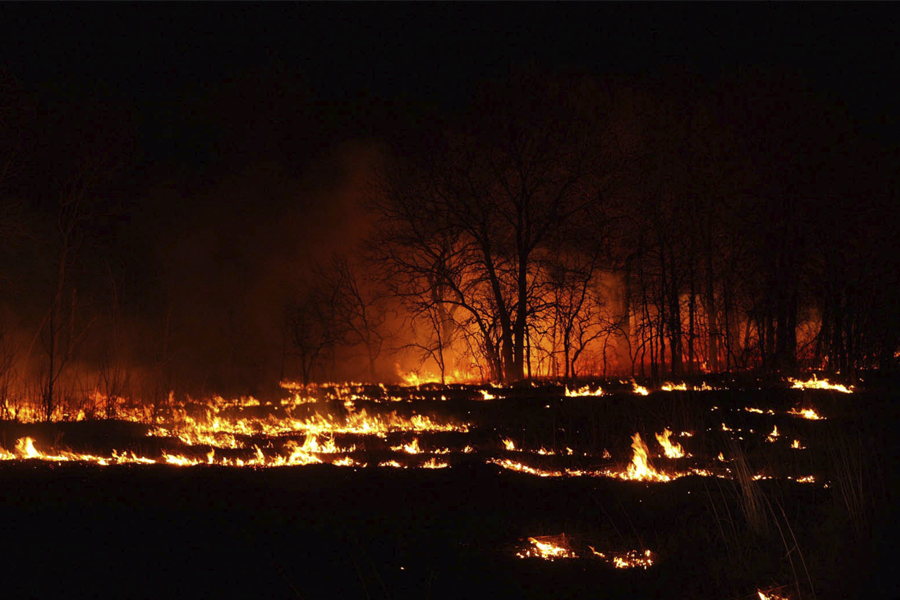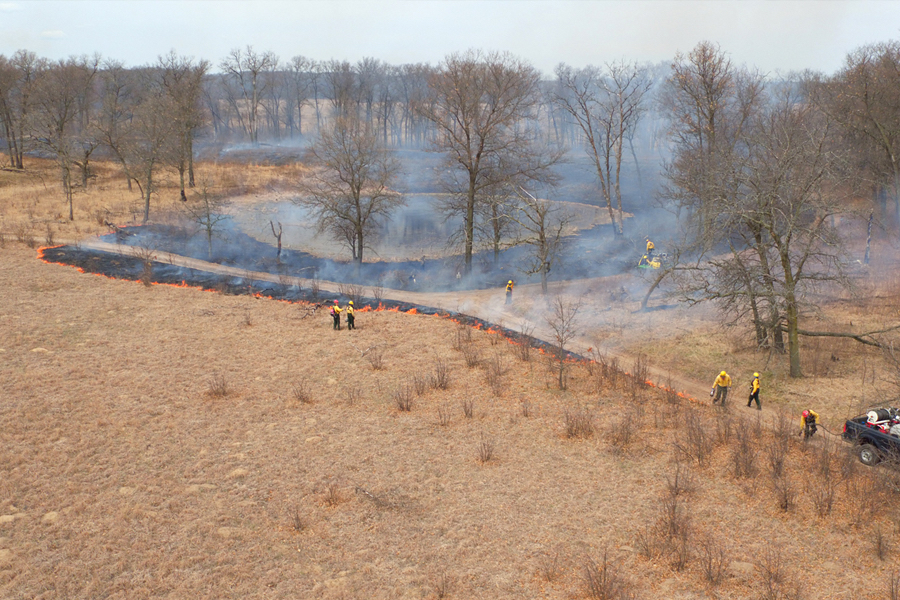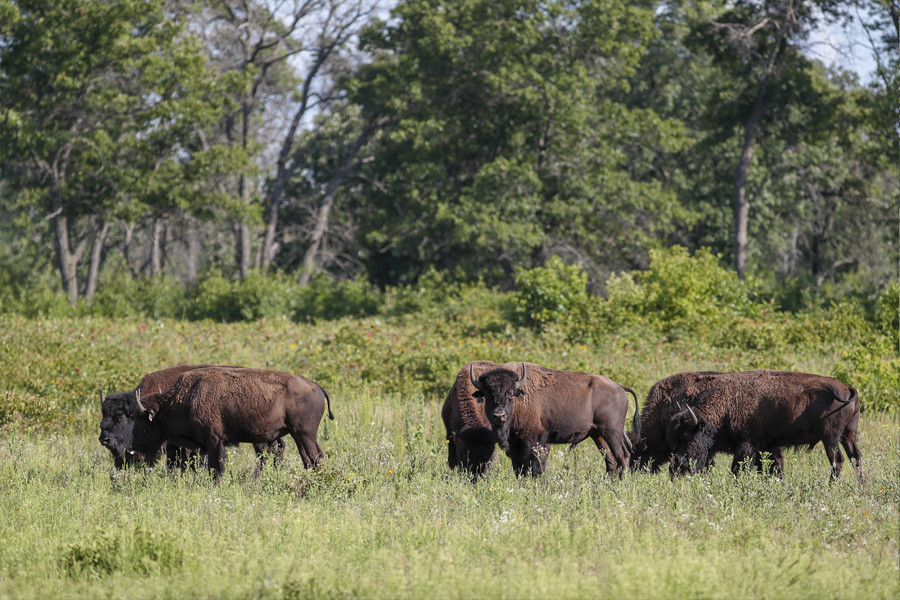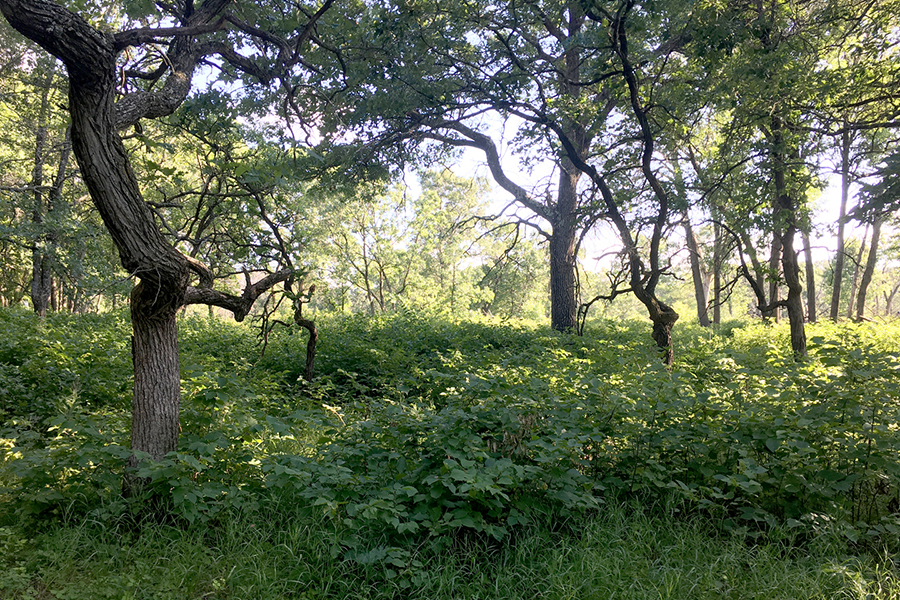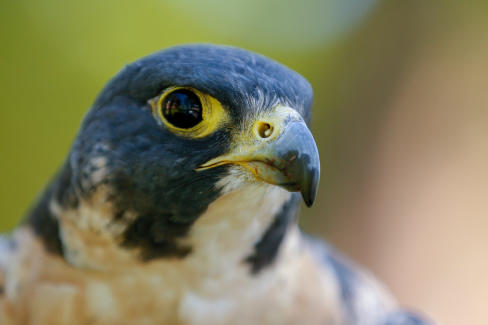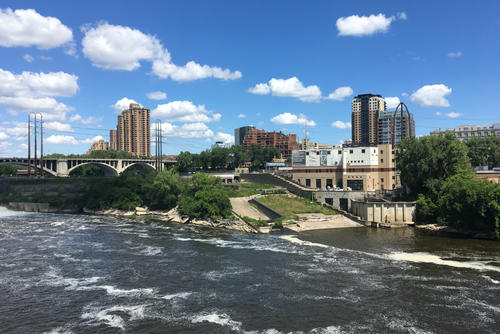Cedar Creek
An hour north of the Twin cities, U of M researchers and students lead the fight in humanity’s supreme battle: to stave off climate disaster and repair the Earth.
After Kally Worm began her college career, she took up a premed curriculum, looking forward to medical school and the day she would become a doctor.
Then she landed a summer internship at Cedar Creek Ecosystem Science Reserve.
Suddenly, she found herself out in the green fields and fresh air an hour north of the Twin Cities, monitoring the health not of patients but of plots of prairie plants given extra inputs of carbon dioxide and nitrogen. Working under professional researchers, Worm was in the field measuring photosynthesis when it hit her:
“It was tranquil, quiet, and peaceful,” she recalls. “Two sandhill cranes flew in—it was the most amazing workplace ever. I knew I wanted to stay exactly where I was.”
Now a research manager at Cedar Creek, as the reserve is called, Worm works with a small army of undergrads who share her delight in coaxing its ecosystems into answering some of the most critical questions in ecology: How will higher temperatures and inputs of CO2 and nitrogen affect the world’s grasslands, forests, and savannas, and all the species, including humans, who depend on them?, and How can we mitigate the damage from decades of dependence on fossil fuels?
The fruits of these young researchers’ labor have already figured in countless influential scientific publications. And while they work through their summer internships, they rub shoulders with eminent ecologists like Sarah Hobbie and David Tilman, professors in the College of Biological Sciences (CBS, Cedar Creek’s home college); and Peter Reich, professor in the College of Food, Agricultural and Natural Resource Sciences. All three have been elected to the National Academy of Sciences, an honor many consider second only to the Nobel Prize.
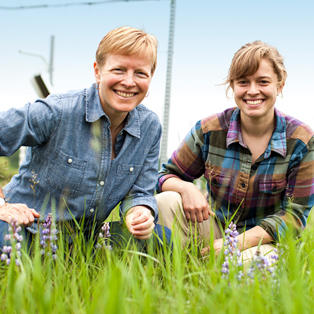
Professor Sarah Hobbie and former graduate student Clare Kazanski
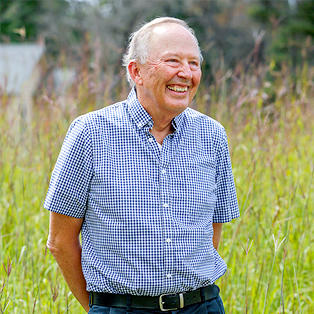
Professor David Tilman
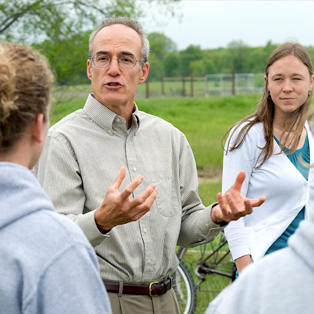
Professor Peter Reich
“When young people come here, they see real experiments by real scientists and learn how science is done,” says Tilman, who is also director of Cedar Creek. “The curiosity we’re all born with makes them natural scientists who discover how the natural world works.
“To me, the best thing about Cedar Creek is the people.”
An enviable tradition is born
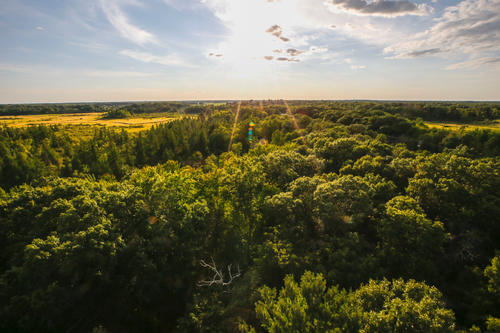
At Cedar Creek, prairie and oak savannas meet hardwood and softwood forests in 8.5 square miles of rolling grasslands, woodland, and lakes.
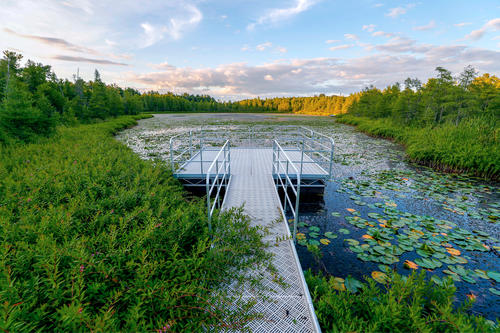
Nestled in its woods, shallow, lily pad-laden Cedar Bog Lake projects a calm that belies its status as the site of a world-famous discovery.
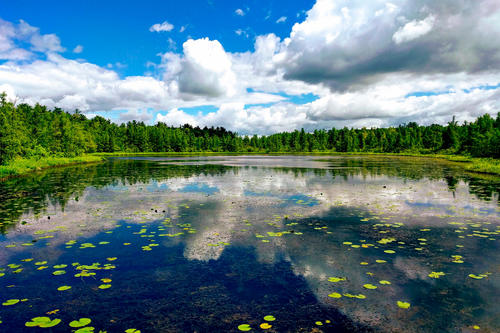
Based on his work there, U of M graduate student Raymond Lindeman described mathematically how energy moves from organism to organism through an ecosystem, but other ecologists found his ideas hard to accept.
When his key findings were finally published—shortly after his premature death in June 1942—they shook the pillars of conventional ecology, launched the field of ecosystem ecology, and put Cedar Bog Lake on the scientific map.
The reserve was established as the Cedar Creek Natural History Area in 1942. Over the years it has hosted precedent-setting work, such as that of John Tester and Donald Siniff in the early 1960s. Both U of M professors, they developed the world’s first automated telemetry system for tracking animal movements, which led to new insights into animals’ behavior and roles in helping ecosystems function.
“Cedar Creek has a rich history of cutting-edge research in ecology,” Tilman observes. “We’re carrying on the tradition.”
Experience the beauty of the Cedar Creek reserve
Mind-boggling benefits of biodiversity
Cedar Creek made headlines in the mid-1990s, when work headed by Tilman showed the extraordinary value of having lots of plant species living in “biodiverse” assemblages.
Cedar Creek was where I figured out I wanted to be an ecology major. It was like “This is ecology. Wow. This is it for me.” —Katie Schroeder, current intern
Beginning in 1994, Tilman and colleagues planted small plots of land with between 1 and 16 species of prairie plants. Over the years, the plots with more species—i.e., greater biodiversity—have been more productive and stable to environmental change.
“Greater biodiversity raises productivity, stability, and resistance to drought, and it increases insect diversity,” Tilman says. “As diversity rises, we get more predatory insects that control leaf-eating and sap-sucking insects, and that’s good for plants.”
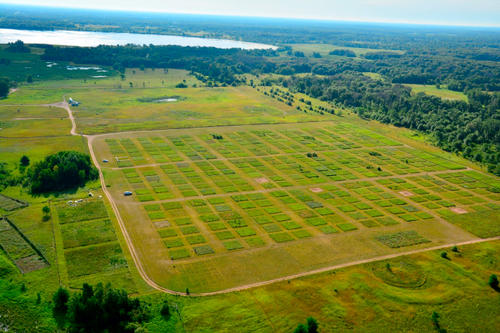
Aerial view of experimental plots at Cedar Creek. Photo: Jacob Miller
Professors Eric Seabloom and Elizabeth Borer position a frame used in measuring plant diversity.
“Plants’ enemies include grasshoppers and fungi,” adds Cedar Creek researcher and CBS professor Elizabeth Borer. “Friends include pollinators and fungi that live in symbiosis with plant roots.”
I feel as though we’re unlocking some giant secrets about what the plants are doing. It’s a lot of fun.—Sara de Sobrino, current intern
This work has revealed how healthy ecosystems are like healthy towns. Just as towns thrive on interactions between people with a variety of skills, so ecosystems thrive when a variety of species benefit from each other’s unique skills in capturing light, water, nutrients, and other factors central to survival.
“For example, fungi in the soil can trade phosphorus they extract from the soil for sugars a plant produces during photosynthesis,” researcher and CBS professor Eric Seabloom explains.
While a potent defense for ecosystems, biodiversity itself is vulnerable to human disturbance. In fact, says CBS associate professor Forest Isbell, “Habitat loss and fragmentation are the primary drivers of biodiversity loss on land.”
As people have converted natural ecosystems to farm fields, and built roads and other barriers to interactions among native plants and animals, Cedar Creek shows what can be gained by finding ways to preserve these habitats and interactions.
{"preview_thumbnail":"/sites/twin-cities.umn.edu/files/styles/video_embed_wysiwyg_preview/public/video_thumbnails/718QONJzpjo.jpg?itok=z15wqMaz","video_url":"https://www.youtube.com/watch?v=718QONJzpjo","settings":{"responsive":1,"width":"854","height":"480","autoplay":0},"settings_summary":["Embedded Video (Responsive)."]}
Soil study hits pay dirt
When the biodiversity experiments began, Tilman saved samples of soil from all the plots of land. Some 20 years later, one of his graduate students, George Furey, noticed that soil from the plots with 16 species was a lot darker than the other samples.
Most cited living ecologist
David Tilman is the world’s most cited living ecologist, as measured by how often other researchers refer to his work in their own publications. (Only Charles Darwin ranks higher.)
“The first farmers unearthed fertile soil. They are rich in organic matter, which is dark,” Furey explains.
He tested the soil chemistry, and sure enough, “Across the board, nutrients had increased in direct relation to plant diversity.
“Each plant may bring a different ratio of nutrients—such as phosphorus, potassium, calcium, and nitrogen—to the surface soil,” Furey says. “They then release them, along with organic matter from their roots, shoots, and leaves, to other plants when they die. It may not be, as we thought, that prairies are diverse because their soil is fertile, but that their soil is fertile because they are diverse.
"A lot of what we know and hypothesize about the world comes from Cedar Creek. It’s cool we get to do science where people have laid the foundation for our work."--Megan Wilcots, grad student
“A lot of Cedar Creek fields are recovering from tillage that ended in the 1920s, ’30s, and ’40s. What if we could get back to pre-tillage soil fertility?”
Maybe we can. This work points the way to restoring the productivity and carbon-storage capacity of abandoned farms around the world by cultivating diverse plantings. According to a Yale University study, losses of farmland in the United States amounted to almost 98,000 square miles—an average of 1,960 square miles per state—between 1997 and 2018. Large losses were also reported for China and the European Union.
The ecological principles uncovered at Cedar Creek “are the stuff of textbooks,” Tilman says. “Our experiments have led to a hundred like them around the world. They all show that the number of species is a critically important determinant of how ecosystems operate.”
One tangible result so far, he notes: “Minnesota rewards farmers for planting diverse plants on fallow land.”
Burns and bison to the rescue
Before European settlement, Minnesota was awash in oak savannas, says Isbell, who is also associate director of Cedar Creek. But today, preserving the savanna for future generations is tricky. One reason is the capricious timing and effects of prairie and savanna fires.
What strikes me about Cedar Creek is that it is like a well-oiled machine. It has large-scale experiments that one person can’t do. It’s really encouraging that people work together to make science happen and test hypotheses. —Max Zaret, grad student
For example, “Big oak trees need fire to keep out maples, which can grow in their own shade,” Isbell says. “But oak seedlings die in fire.”
In 1964, researchers at Cedar Creek started an experiment to examine the effects of different fire regimes. Recently, Isbell and colleagues have expanded this study to probe the interactions between different fire regimes and grazing by what could be an oak seedling’s best friend: the bison. Since 2018, herds of young male bison have roamed an enclosure at Cedar Creek during the summer. Their job is to eat the grasses that provide the primary fuel for fires and compete with oak seedlings for resources.
So far, they’ve done it well.
“Bison are reducing the temperature of fires and increasing the survival of young oak seedlings. We found that wherever they eat the grass, oak seedlings do better,” Isbell says. “They also double the productivity of grasslands by recycling [more] grass biomass.”
Spreading the message globally and close to home
Cedar Creek’s influence has spread around the world, and not just verbally. Elizabeth Borer and Eric Seabloom are founders of the Nutrient Network (nutnet.org), a global research cooperative supported by Cedar Creek. It operates experiments at 130 sites, on every continent except Antarctica, to learn how human activities affect ecosystems.
Also at Cedar Creek, the BioCON (Biodiversity, CO2, and Nitrogen) experiment, begun in 1997, examines how plant communities and soils respond to current trends of rising nitrogen deposition and atmospheric CO2 and falling biodiversity. Leading the BioCON research effort is Peter Reich, with Sarah Hobbie and Tilman as co-principal investigators.
It’s awesome to read about the work going on at Cedar Creek and then actually go out and be a part of it. It’s opened my eyes to not only the academic side of environmentalism, but also the jobs in government, nonprofits, and the private sector. —Sara Crader, 2019 intern
Experiments like these yield information crucial for protecting ecosystems in the face of climate change and other modern dilemmas. It’s vital that children be aware of these issues, and they’re learning through Caitlin Potter, Cedar Creek’s education and outreach coordinator, who spreads the word to more than 10,000 Minnesotans each year via K-12 school visits and field trips, guided hikes, and other initiatives. And an undergraduate field ecology course, featuring the biodiversity and climate change research, is offered each year during May session at Cedar Creek.
The take-home message of Cedar Creek is that with humans now dominating the Earth, we have a lot to learn and new policies to make if we’re to avoid losing what we have.
“Scientists are continually discovering solutions that can let us live better lives and leave a sustainable planet for future generations,” says Tilman. “For example, we can restore abandoned land with diverse plantings and get clearer, cleaner groundwater, and get large amounts of carbon dioxide stored in soil as organic matter, which helps the climate problem. We can also turn biomass into liquid fuel.
“To create a sustainable future, we cannot just keep doing what we’ve been doing.”
2019 by the numbers
Undergraduate students and interns
Graduate students and Postdocs
Faculty
Other researchers and technicians
Citizen scientists
Online contributors helping identify species
Meet the people behind the story
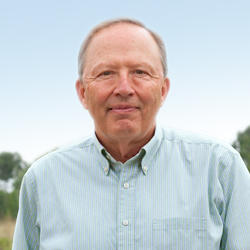
David Tilman, PhD
Regents Professor, College of Biological Sciences
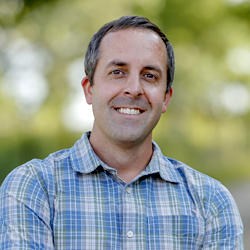
Forest Isbell, PhD
Associate Professor, College of Biological Sciences
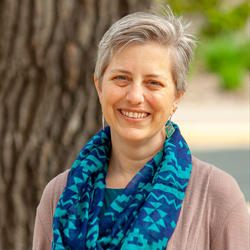
Elizabeth Borer, PhD
Professor, College of Biological Sciences
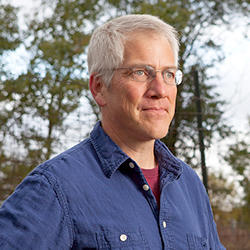
Eric Seabloom, PhD
Professor, College of Biological Sciences
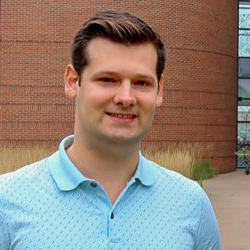
George Furey
Graduate Student, College of Biological Sciences
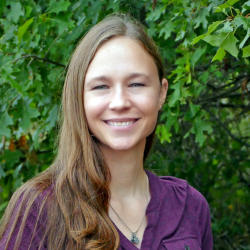
Kally Worm
Assistant Scientist, College of Food, Agricultural and Natural Resource Sciences
- Categories:
- Agriculture and Environment
